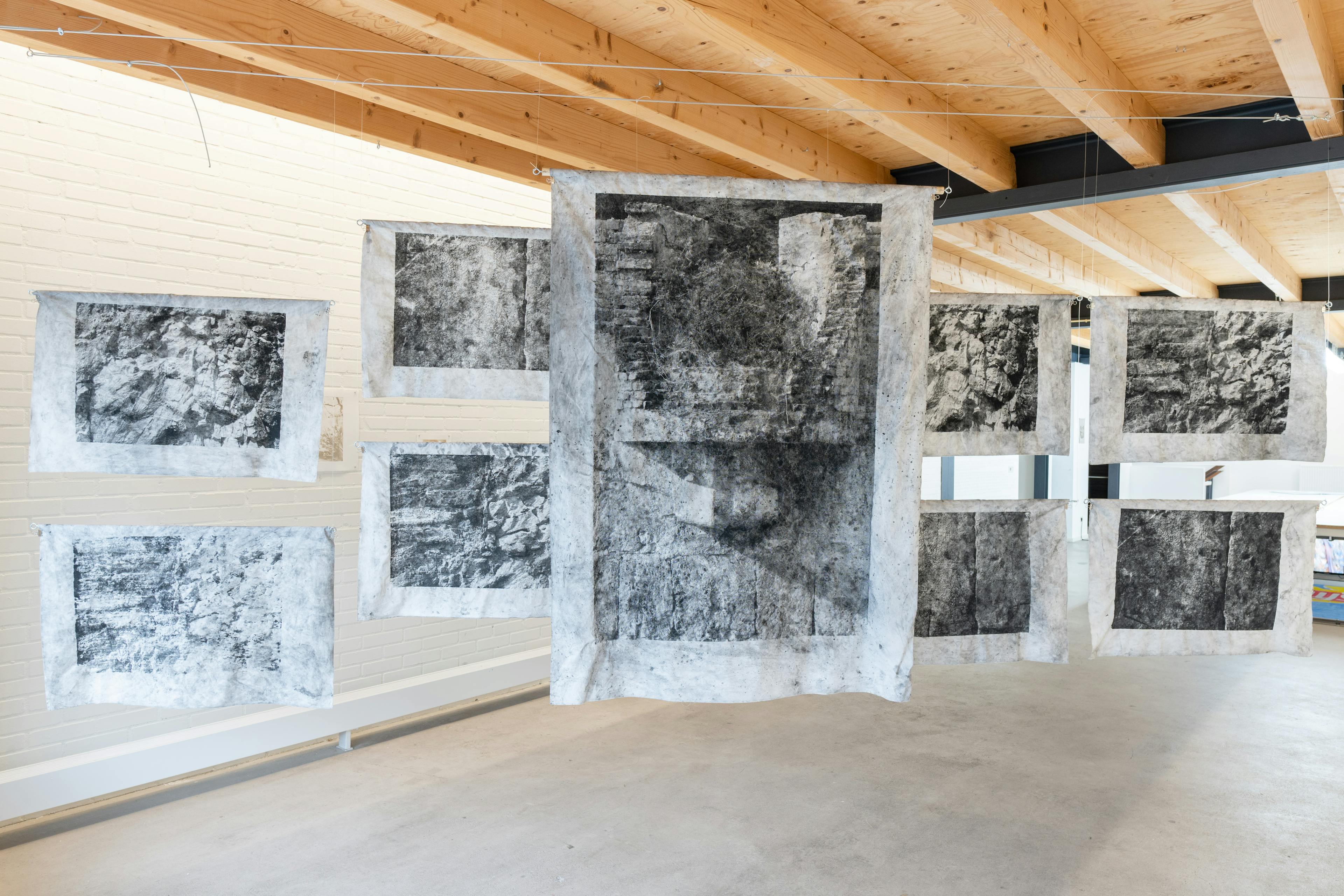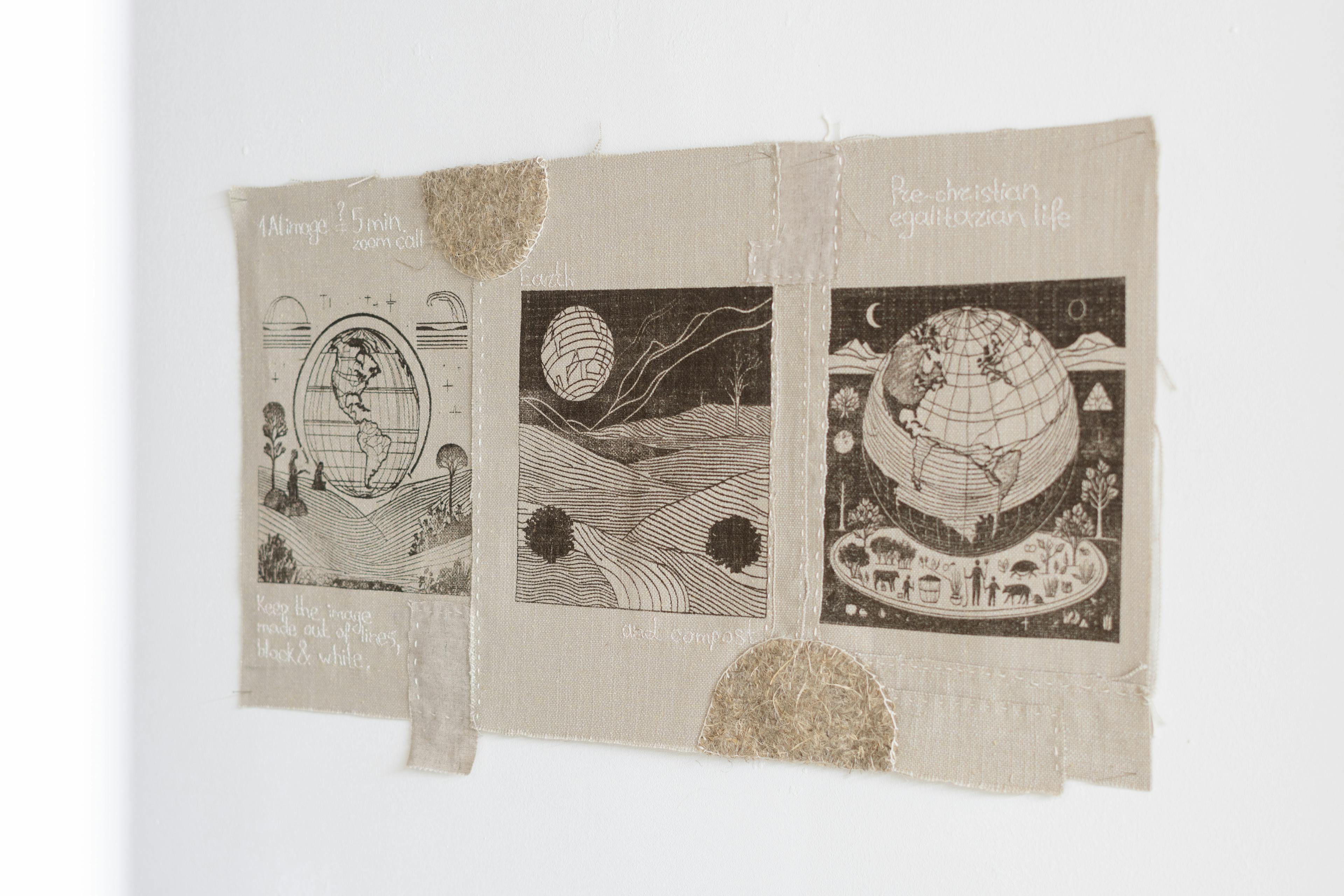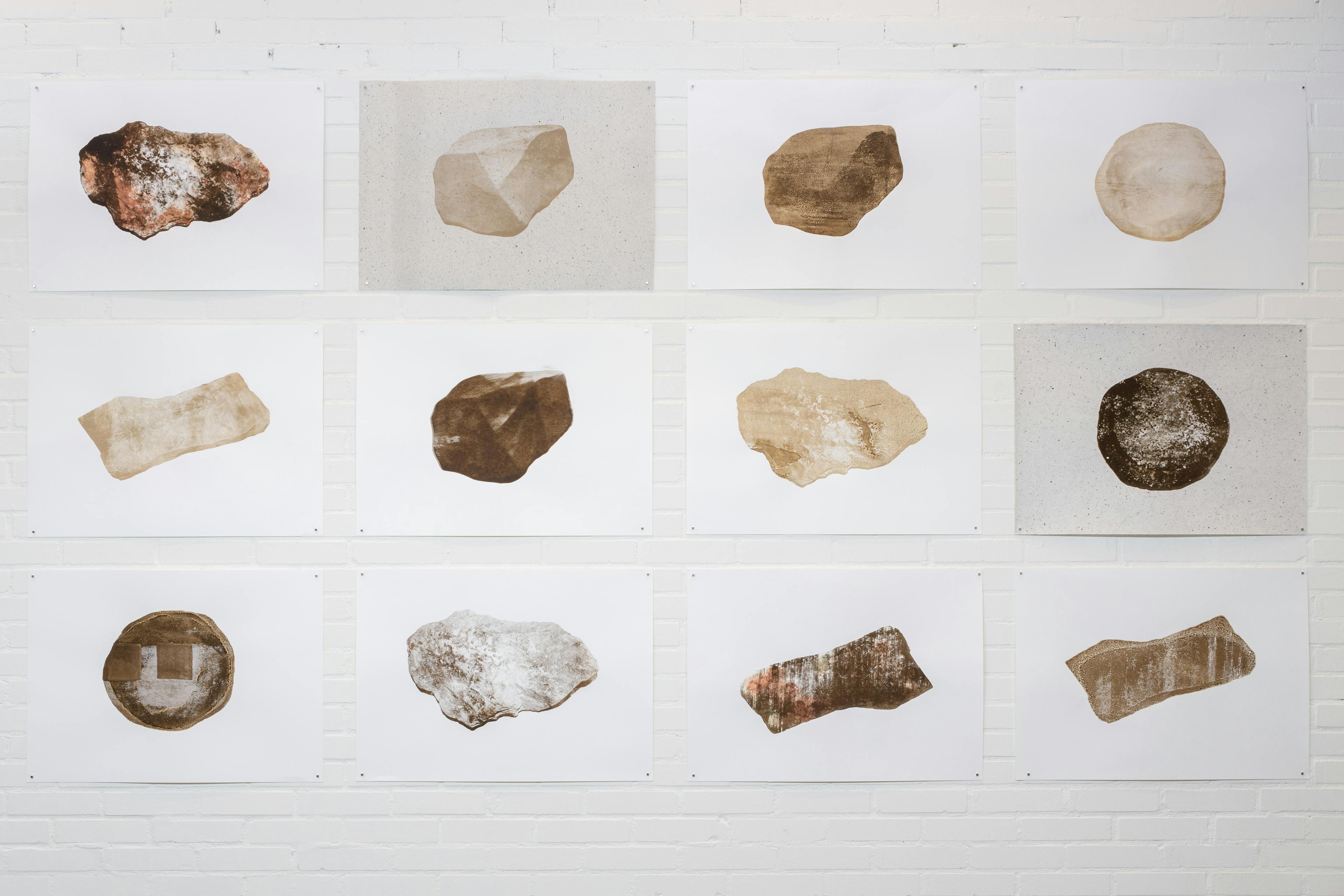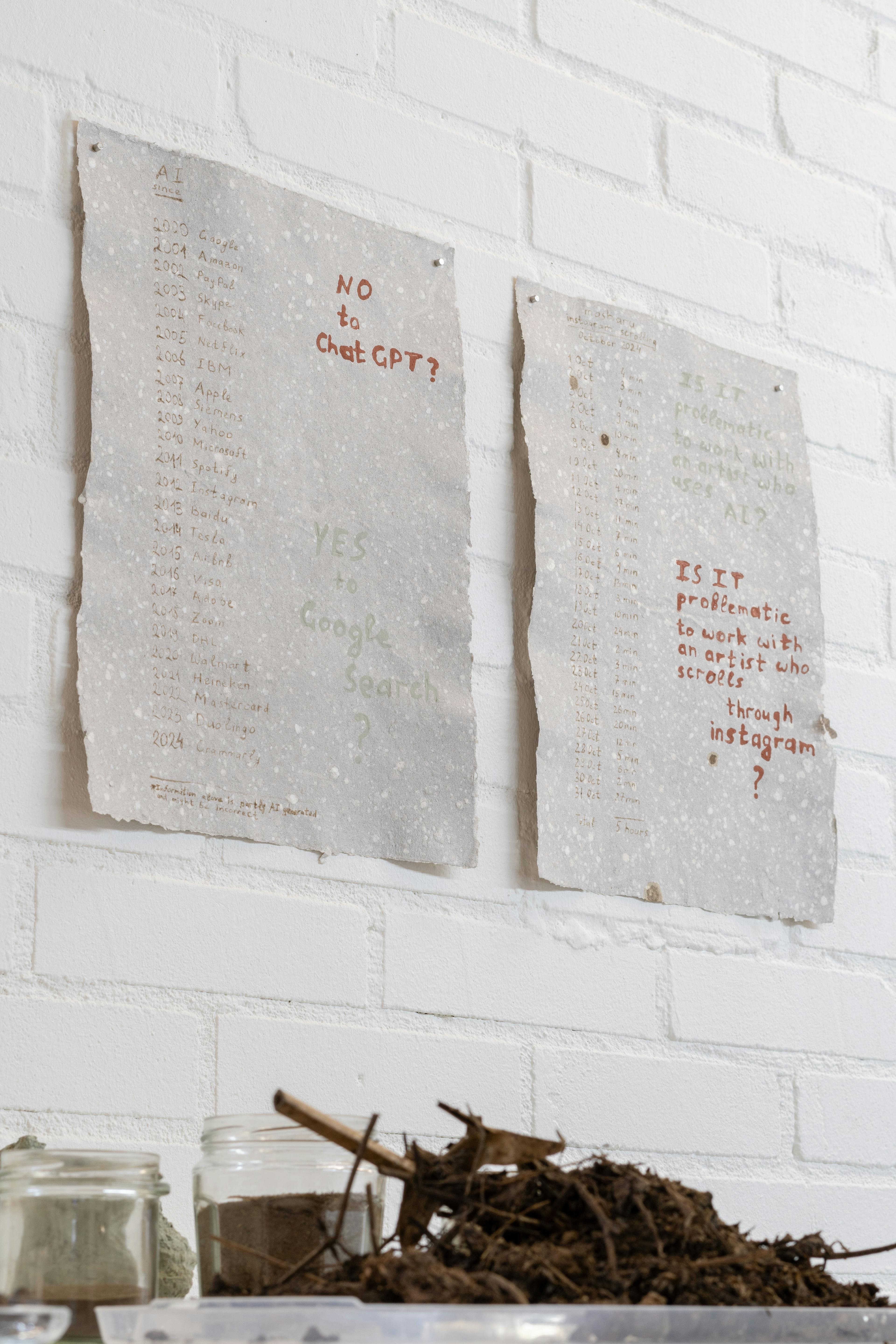The finissage of the exhibition The Living Print will take place on Friday 14 March.
We close the exhibition with an artist talk about the course of the various work processes and how the works relate to the landscapes from which they emerged. When do we speak of appropriation and extraction in an art practice and what are ways to deal with this honestly?
About The Living Print
Four artists have experimented in our workshops with natural materials with which they created printed matter. However, their work also contains references to the omnipresent AI and the immense amounts of waste that remain in nature. Writer Lucie Fortuin followed the artists in their work process and wrote an overarching text.
----
To be we need to know the river
holds the salmon and the ocean
holds the whales as lightly
as the body holds the soul
in the present tense, in the present tense.
- Ursula K. Le Guin, excerpt from ‘Infinitive’ -
Curator: Astrid Nobel
Artists: Arvo Leo, masharu & Olga Ganzha, Ratu R. Saraswati
Writer: Lucie Fortuin
An exhibition about the world between ourselves and the living nature, made transferable through words and images. On one hand, there is interaction and recognition, as described in the lines above by Le Guin. On the other hand, the loss of biodiversity and living landscapes due to colonialism and capitalism leads to sensations formally named as landscape grief and solastalgia or to the formation of definitions such as ecocide. In what ways do references to nature and materials extracted from it interact within an artistic practice with a responsibility towards the living world they refer to, and how do new forms and ways of working emerge here as well?
Four artists, including a duo, experiment in our workshops with natural materials to create prints. Their work contains references to colonialism, AI, and the foraging of materials. Writer Lucie Fortuin follows the artists in their work process and writes a unifying text.
Program
Friday, January 17 at 5:00 PM: opening
Friday, January 24 from 4:00 - 6:00 PM: workshop by masharu and Olga Ganzha, free entry
Friday, March 14 at 7:30 PM: We close the exhibition with an artist talk about the progress of the different work processes and how the artworks relate to the landscapes they originate from. When does artistic practice involve appropriation and extraction, and what are ways to engage with this ethically?
About the Artists
Ratu Rizkitasari Saraswati
Ratu Rizkitasari Saraswati reflected on the intersection between colonization and fascination with nature. She searched for traces of the old city of Batavia in North Jakarta. The city was built under the command of the perpetrator of the Banda massacre, VOC General J.P. Coen. The original land of the city of Jayakarta was burned down and destroyed by him and the colonial powers in 1619. He also ordered the indigenous people of Nusantara to extract coral building stones from the seabed. These stones are incorporated into Porosity of Parables.
A hike on Mount Salak in West Java and conversations with a local guide who accompanied her there served as a point of reflection on social mobility in Indonesia and the Netherlands, as well as the lasting impact of Dutch colonization on the land and society. She also examined how nature and human exploitation relate to each other and raised questions about the extraction of natural resources, which to this day have changed the landscape of her homeland and the origins of living beings. Like the kantjil, a clever and resourceful animal from Indonesian fables, which was brought to the Netherlands in 1949 for the first post-war aquarium and terrarium exhibition in The Hague and is now part of a breeding program at Artis.
Arvo Leo
From September 25 to October 24, 2024, Arvo Leo crossed the mountains of the Pyrenees, leaving temporary footprints from the Atlantic Ocean to the Mediterranean Sea. In his backpack (where every item was practical, necessary, and weighed down to the gram), he carried one object that seemed to serve no purpose but later became a deliberate starting point. A sheet of temporary glitter dolphin tattoos was carried in a cartoonish manner from the ocean to the sea. While in the mountains, Arvo searched for hallucinogenic mushrooms growing in cow dung, with which he eventually made spore prints. Salt & Vinegar potato chips became one of his favorite snacks, and he imagined having a bag of chips big enough to sleep in. Now it’s 2025, and it's good to remember that with every bag of chips you eat, you're also creating a temporary shelter where you might fall asleep, staring at the ceiling above painted with cave drawings of dancing dolphins.
Dr. masharu and Olga Ganzha
Dr. masharu and Olga Ganzha printed using earth from the Museum of Edible Earth and homemade compost, which continued to evolve even during printing, causing the color to change constantly. They also made their own paper with compost and used paper containing peat and flowers from De Middelste Molen, a traditional paper-making workshop.
The tulip forms balance between stages of decay and resemble organs, somewhere between human and organic forms. Stones, collected from various parts of Russia, are tied to the idea of a severed connection to one’s birthplace due to the uncertainty of being able to return. The experiments with AI led to a discussion about the use of AI within the conceptual framework of this project. Some of the clashing viewpoints are made visible in the form of various annotations.
Lucie Fortuin
During the working period, Lucie Fortuin followed the work and creative processes of the various artists. She spoke with them about the ongoing influence of colonial power structures; about leaving traces, both visible and invisible; about lightweight walking sticks and edible earth. She also shared ideas from her own research into stones as markers of a boundary between life and non-life. “Where I Sit Sand” is a poetic text in which these elements come together—not as a closed whole, but rather questioningly, searching. How does what is happening now live on in an unknown future?





